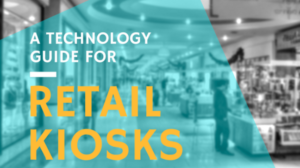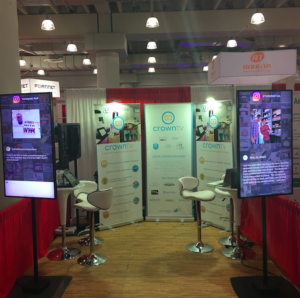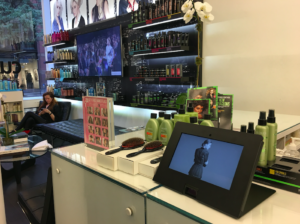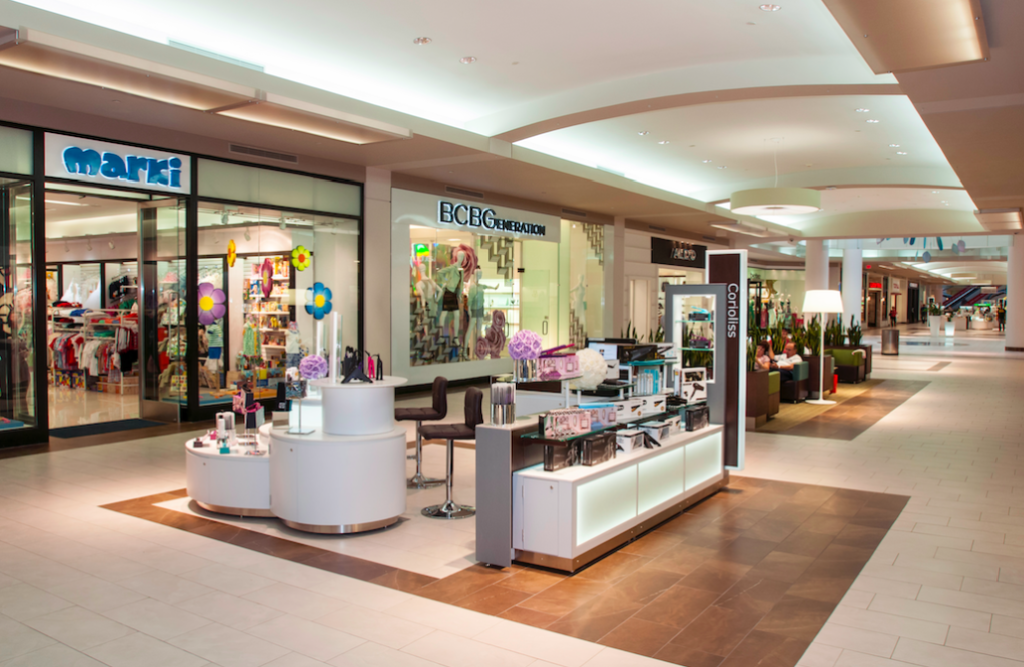(See the full interview with STAK Design here)

Retail technology is spreading fast and retail kiosks need to stay up-to-date to compete. Of course, as in any industry, investing in every piece of new technology would be impossible. Therefore, we’ve created a step-by-step guide for retailers with kiosks to navigate the emerging tech field and build an integrated plan with the technology that will best elevate their business.
Step 1: Why should retail kiosks invest in technology?
The answer to this lies within the question itself: technology is an investment. As with most business investments, there is an initial cost that leads to a greater payout. In the case of retail kiosks, that pay out can take many different forms.
Retail kiosks can use technology that will improve communication. Technology can make communicating easier for kiosk owners as well as more effective for reaching customers.
“Investing in technology gives retailers the opportunity to stay current with their buyers, stay on top of trends, and interact with shoppers.“ – Holly Zalenski, STAK Design
Technology can also bring more attention to their kiosks and thereby increase traffic. With increased traffic and visibility, kiosk owners can also benefit from the modern edge technology gives to their brand.
Step 2: Developing a technology strategy
Before beginning the search for new technology, retail kiosk owners should decide why they are implementing new technology. It is to improve visibility? Or reduce customer wait time? No matter the reason, kiosks should begin their tech upgrade with a clear goal.
“Start by collaborating and asking your team about business goals, i.e. user experience, analytics capabilities. Do lots of research and strategic planning, and also make sure to hire a reputable company with proven track record of successful execution of technology. This is where “You get what you pay for” comes into play.” – Suavek Olesky, STAK Design
After clarifying technology goals, retail kiosks must consider their measurements for success. These success measurements are directly tied to goals but help to narrow down which specific technologies will accomplish these goals.
One measurement for success may be increasing revenue. Of course, all goals are tied to improving the bottom line but to directly improve revenue, kiosks will need technology that contribute to sales and upselling. Another measurement for success is more foot traffic. Technology that generates foot traffic needs to be eye catching and also engaging to draw potential customers in.
Once retail kiosks have their goals and their success measurements, they are ready to begin researching technology that is appropriately suited for their specific needs.
Step 3: Explore your tech options
There are so many new technologies out there, it can be overwhelming to research and decide which are best. After kiosks have established a clear tech strategy, all research should be specifically tailored to meeting kiosk goals.
Tech 1: “Plug and Play” Digital Signage
“With technology today we strongly encourage kiosk retailers to incorporate digital signage. It is a simple and convenient way to keep your marketing current and connect to your buyers.” Zalenski
Digital signage is one of the easiest ways retail kiosks can upgrade their “curb appeal” and incorporate technology. There are two aspects of implementing digital signage: the screens and the player. Most modern kiosks have screens for displaying digital information either from DIY digital signage or simply plugging in a USB. However, kiosks can upgrade their digital signage with a “plug and play” player solution that makes managing content faster and easier.

“Plug and play” digital signage is a way for kiosks to create, manage and display content on digital screens through an online dashboard. This dashboard can be controlled remotely which makes it possible to manage signage at multiple kiosks simultaneously.
Digital signage also allows kiosks to make adjustments to sales and promotions instantly without a high cost. New promotional materials can easily be scheduled and pushed to screens whenever needed which means messaging can be tailored to very specific audiences and time of day. These promotional materials can include anything from trending products, flash sales or complementing products.
Tech 2: Beacons
Beacon technology is often misunderstood among retailers. Michael Kasavana, PhD explains:
“Beacon technology, a relatively new retail technology, engages consumers at the point of sale in a non-obtrusive manner. It requires consumers to opt-in on their smartphone to be guided to the correct location of a product offering”
Retail kiosks can use beacons to send coupons and sale alerts to nearby customer who have opted-in. Beacons are especially useful for kiosks because often, kiosk traffic is based on impulse shopping. Beacons are the perfect bait for kiosks to draw in impulse shoppers nearby.

“Not many people are aware of promotions that a kiosk may have unless they are actually at the mall walking right by “ -Olesky
Not only do beacons bring in customers, they are a tool to track data about consumer profiles and behavior. By analyzing the data collected from beacons, retail kiosks can make better decisions about location, promotions, and product features.
Tech 3: Self-Service Stations
Self-service stations can come in many forms but ultimately, they are places where shoppers can access more information about products without speaking with a sales rep. The greatest benefit of self-service stations is that they are engaging and with screen technology, they eliminate the waste and clutter of paper and printed materials.
One type of self-service station is a product scanner display. These displays allow customers to scan barcodes in order to see more product information including reviews, videos, etc.

Another type of self-service station is a touchscreen. Touchscreen stations can help customers look through additional products, submit their contact information for product updates, and even make a purchase – all without needing to speak to a person. Both touch screens and product scanners also serve to collect valuable data on which products customers are interested in as well as facial recognition data that can tell kiosks the age and gender of consumers watching their screens.
Tech 4: POS Systems
POS systems are a common but powerful upgrade retail kiosks can make to improve business. New Cloud POS system run on touchscreens and touchpads that make payments, receipts, and sales easier for sales reps and customers. POS systems are also easily adjustable and can be updated or edited whenever necessary.
Primarily, POS systems make closing sales faster and easier. With mobile touchpad systems, retail kiosks do not need to waste space on a register counter. Sales reps can simply carry a touchpad that customers can checkout on.
Step 4: Integrate, integrate, integrate
Every great marketing campaign has one aspects in common: integration. Connecting the dots between all technology is crucial in building a comprehensive, high-tech experience.
“The key here is to work with someone locally in the USA, experienced in integration of both technology and kiosk – a company that has partners with solutions and options available for any scenario needed.” – Suavek
For a full high-tech experience, retail kiosks can start with digital signage and beacon technology to draw customers in. Then, self-service kiosks can further engage customers and provide needed product and pricing information. Finally, a highly trained sales rep with a mobile POS system can close the deal and everyone walks away happy.
“The key here is to work with someone locally in the USA, experienced in integration of both technology and kiosk – a company that has partners with solutions and options available for any scenario needed.” – Olesky
Of course, integrating technology into retail kiosks does not stop there. Retail kiosks can also incorporate social media, advanced analytics, retargeting ads, etc to complete their technology strategy plan.
To take the first steps toward upgrading your retail kiosk, contact CrownTV to set up a free digital signage or product scanner demo.

